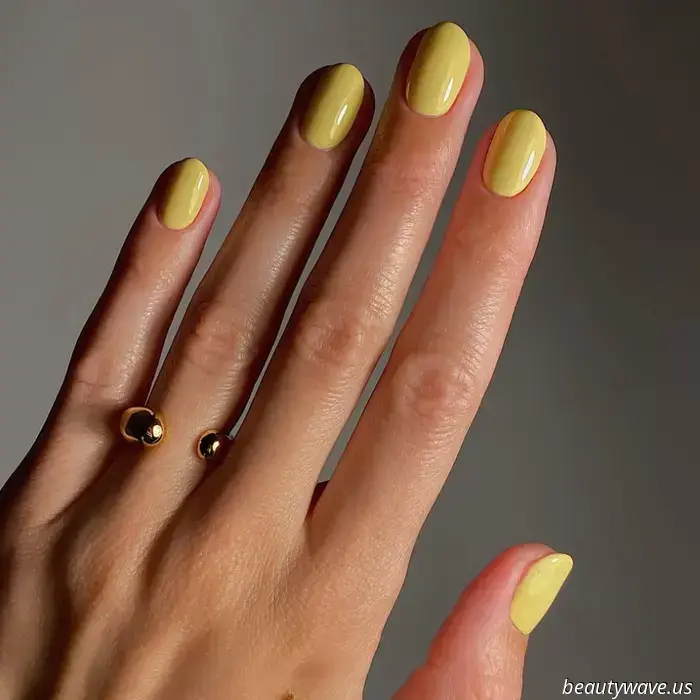
From Beginning to End: This is the Complete Guide on How to Expertly Remove Acrylic Nails
If you can relate to me, you understand the true benefit of a great manicure. Even during life's chaos, having my nails done provides a unique sense of serenity and assurance. Lately, I've shifted to more of a "salon-quality press-ons" type of person since they are simple to remove. However, I recall the times when I used to get my manicures at the salon and would delay returning to remove whatever I had done earlier in the month due to the commitment of time involved. Honestly, I didn’t always have the patience, which led to damaged nails. Knowing what I know now about how simple it can be to remove nails at home (especially acrylics), I would have definitely opted for a safer method. "The safest and most effective way to remove acrylic nails is by soaking them in 100% acetone, which dissolves the acrylic," states Juli Russell, a nail expert at Sally Beauty. This can be executed using either aluminum foil or a glass bowl. "The foil method helps to reduce mess and skin exposure," Russell explains. "The bowl method is quicker but may be harsher on the skin since your fingers are submerged." Interested in learning how to remove your acrylics professionally? In the spirit of sharing knowledge, here's everything you need to know about removing acrylic nails—step by step—from the experts.
What do I need to remove acrylic nails?
- Nail clippers
- Nail file (100/180 grit)
- Buffer block
- 100% pure acetone
- Cotton balls or pads
- Aluminum foil precut into strips (for the foil method)
- Cuticle pusher
- Nail buffer
- Cuticle oil
- Hand or nail moisturizer
- Two small glass bowls (for the soaking method)
- Towel (to protect your surface)
- Paper towel
Can I remove acrylic nails and gel polish the same way?
In brief, gel and acrylic nails cannot be removed using the same method. If you're familiar with gel removal, you might be tempted to use that technique on your current manicure, but celebrity nail technician Tanaya Middleton insists that the processes are different. "Gel polish typically sits on the natural nail and can be soaked off more quickly," she explains. "Acrylic nails are more substantial and adhered to the nail with a strong adhesive, necessitating more filing and longer soaking times in acetone to dismantle the acrylic structure." She also cautions that using gel removal methods on acrylics can harm your nails. If you lack the necessary tools for proper removal, it’s best to wait and consult your nail technician.
Step 1: Set Up Your Space
Before you begin, ensure your workspace is organized with all required items. Lay down a towel to catch any spills, have your nail file and clippers within reach, and place your two bowls close. "Fill one bowl with hot water (just warm enough to tolerate) to create a warm water bath around the other bowl," suggests Jacqueline Pham, a celebrity manicurist for Color Street. "This will enhance the effectiveness of the acetone. Pour pure acetone into the second bowl—sufficient to submerge your nails. Alternatively, if using the foil method, prepare small squares of aluminum foil (about three inches) and cotton balls/pads instead of a bowl of acetone." Middleton adds it's beneficial to carry out the removal in a well-ventilated area to avoid inhaling acetone fumes. If using the foil method, pre-soak your cotton balls. Keep paper towels handy for wiping your hands, and have your cuticle pusher, moisturizer, and cuticle oil accessible. Pro tip: Sitting comfortably is crucial, as the entire process takes about 20 to 40 minutes.
Step 2: Cut Your Nails
Once your space is prepared, start by cutting your nails. To limit the amount of acrylic that needs to be soaked off, cut as close to your natural nails as you can without actually cutting them, according to Middleton. "This step is essential as it shortens the length and bulk of the acrylic, making the following filing and soaking steps more efficient and time-saving," Pham notes.
Step 3: File and Shape Your Nails
After cutting your nails, grab your coarse file to eliminate the shiny topcoat and thin out the acrylic. Both Middleton and Pham recommend holding the file at an angle and filing in one direction to prevent stressing the nail. Pham mentions that this step allows the acetone to penetrate the acrylic more quickly, accelerating the removal process. "Neglecting this step could make it significantly harder for the acetone to dissolve the acrylic, prolonging soaking time and possibly leading to frustration or damage to the natural nail," she warns.
Step 4: Soak
As previously stated, there are two ways to tackle this step. Here is a breakdown of each method:
- Bowl: If you haven't poured the acetone into your bowl yet, do
Other articles
 L.A. It Girls Are Trading XL Totes for the Chic Bag Trend Designed for Pilates and Matcha Outings.
One example is Hailey Bieber.
L.A. It Girls Are Trading XL Totes for the Chic Bag Trend Designed for Pilates and Matcha Outings.
One example is Hailey Bieber.
 Black heels are perfectly acceptable, but in Portofino, it's widely recognized that this shoe color appears more stylish when paired with dresses.
Simply a suggestion.
Black heels are perfectly acceptable, but in Portofino, it's widely recognized that this shoe color appears more stylish when paired with dresses.
Simply a suggestion.
 Worn Brunette Is the Subtle Hair Color Taking Over L.A. and Paris at the Moment.
Even Hailey Bieber is a supporter.
Worn Brunette Is the Subtle Hair Color Taking Over L.A. and Paris at the Moment.
Even Hailey Bieber is a supporter.
 My everyday stress levels have significantly decreased thanks to this transformative bath-time essential.
The additional calmness that I know we all require right now.
My everyday stress levels have significantly decreased thanks to this transformative bath-time essential.
The additional calmness that I know we all require right now.
From Beginning to End: This is the Complete Guide on How to Expertly Remove Acrylic Nails
Taking off acrylic nails may appear challenging, but these expert tips demonstrate that it can be simple. Continue reading for all the information.
